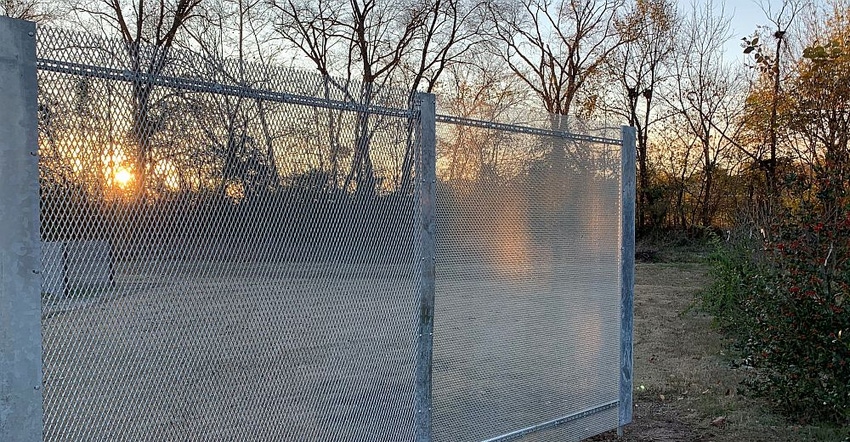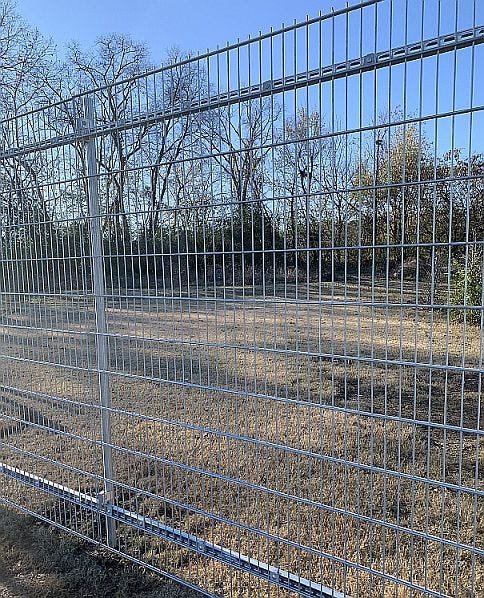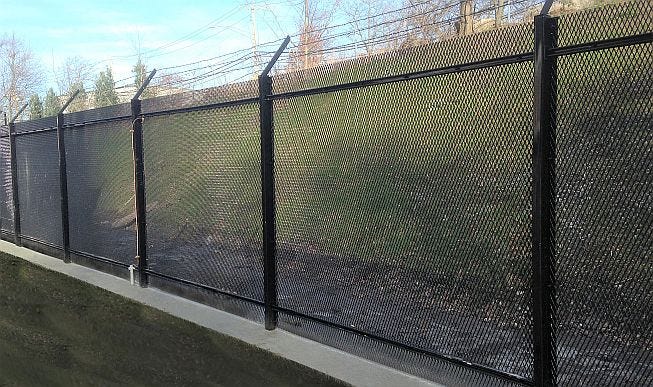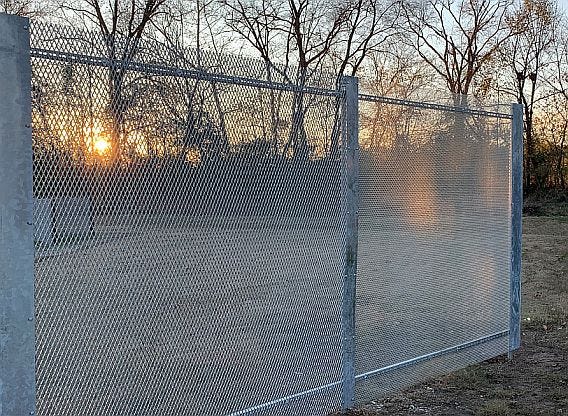- Site Maintenance and Safety
- Building Materials and Components
- Management and Operation
- Conversions and Renovations
- Construction
Securing Your Perimeter: Options for Retrofitting the Self-Storage Facility Fence
Chain-link fencing is used along the perimeter of many business properties, but it isn’t the most secure barrier. If you’re looking to upgrade or repair the fence at your self-storage facility, consider these retrofit options, which allow you to save money by re-using your existing posts.

Chain-link fencing is installed along the perimeter of many business properties, including self-storage facilities. But though it’s fairly inexpensive and can be erected quickly, it comes with drawbacks. In particular, it doesn’t offer the best security. A few minutes and a simple bolt-cutter are all that’s needed to breach it. Chain-link fencing can also be scaled by would-be thieves, or damaged by vehicles, unruly vegetation and adverse weather.
If you’re looking to fix a damaged chain-link fence or perhaps upgrade to a more secure solution, there are retrofit options that allow you to re-use your existing fence posts, which represent a significant portion of your original investment. Pouring foundation and setting posts is labor-intensive and costly; but if you’ve already got them, you can now explore better options at less expense. Following are three to consider for your self-storage site perimeter.

A welded wire fence
A Better System
A layered approach to self-storage security is key, with the first tier being a quality fence system that prevents or deters intrusion for much longer than a chain-link fence can. Expanded metal panels, welded-wire panels and palisades (sometimes called stakewall or paling) are superior options, and a good retrofit system can accommodate any of these.

Expanded metal fencing
All three options provide significant anti-cut and -climb capabilities. Though they can't always completely prevent intrusion, especially when battery-operated power tools are involved, they can typically delay the breach and subsequent entry by five to 10 minutes. Combined with a sensor or alarm system, this allows enough time for security personnel or first responders to arrive. In some cases, a hybrid system consisting of expanded metal panels and palisades are used to capture the best of security and aesthetics.
Fence Components
In addition to the posts from the original chain-link fence, a retrofit system consists of three principal components: panels or pales, horizontal rails, and brackets. Let’s examine each.
Panels or pales. When choosing these, it’s important to consider the open-area percentage (the ratio of open to closed area). While panels with small openings are superior in terms of anti-cut and -climb capabilities, they need to be suitable for the post size and strength of the original system. Here are some other important factors that contribute to a structurally sound, retrofit fence:
Post size
Post spacing
Fence height
Post-embedment depth
Local requirements regarding maximum wind speed/load
A good fencing supplier can speak to all these items and can submit wind-load calculations stamped by a professional engineer.

A metal mesh fence
Horizontal rails. The number of rails and type of rail attachment used to support your fence are critical. They must work with any post spacing allowed by engineering and wind-load requirements. A chain-link fence often doesn’t require tight tolerances in terms of spacing; therefore, the retrofit system needs to be highly flexible to accommodate variances among existing posts.
In a typical retrofit, the rail system is installed front of the posts but behind the panels, providing a complete independency between panel size and post spacing. Thankfully, the panels don’t need to fit perfectly between posts, which eliminates the labor-intensive process of field-cutting to make panels fit into inconsistent spacing.
Another important aspect of retrofitting a high-security fence is the labor required to install a rail system onto existing posts. A good system doesn’t require any fasteners to connect rails to one another. Rather, it uses fastener-less connectors or splices that hold in place with friction, thus reducing labor cost.
Post brackets. These are another important component of the fence retrofit. They must be cost-effective and easy to install, requiring a minimum number of fasteners. Good ones support the rail system with a simple through-hole, allowing each horizontal rail to pass through securely without any additional fasteners. This bracket-to-rail configuration is often called a “bypass system,” as it enables rails to bypass the posts instead of being cut to fit each spacing and having to mechanically fasten rails between posts.

A palisade fence
Retrofit Advantages
There are several positive aspects to a self-storage fence retrofit. First, you can complete the project without any interruption to your business. Because the existing posts remain in place, the process doesn’t typically require heavy machinery such as drilling equipment or concrete trucks. This means you can keep staff and customers safe as they continue to move freely about the property. Here are some other benefits:
Sections of fence can be replaced one at a time, so you never have to leave gaps in the fence overnight, which would leave your site vulnerable.
Because a retrofit fence uses independent components, any damaged sections can easily be replaced.
You can use different types of fence throughout the self-storage property, depending on your needs. For example, you might use a more high-security fence like expanded metal along unprotected areas of the site while using something more aesthetically pleasing like palisades in those that are more visible and better monitored.
The main benefit of a retrofitted self-storage fence is flexibility. Not only does it help you retain a large portion of your original investment, it addresses any concerns that arose after the original system was designed and installed. This allows you to address security issues in a timely, cost-effective manner.
Markus Erbeldinger is the product and engineering manager at Amico Security, which provides perimeter-security systems and metal-security fence solutions. He can be reached at [email protected].
About the Author(s)
You May Also Like





